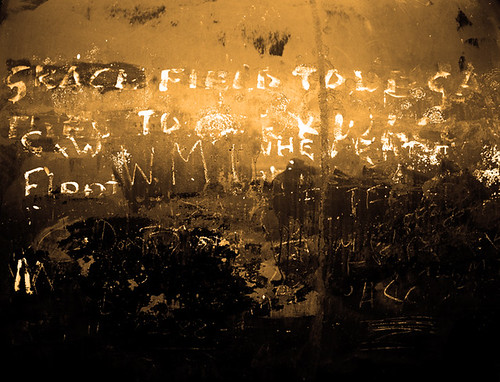Forlorn Land
by Kelly Ana Morey
Foreland
- a headland, cape, or peninsula
- land lying in front of something, such as water
There is a strong thread of thought that holds that the very best photographs are the result of relationships, and this can also true of landscape photography. Only by repeat journeys back to a familiar place does the immediacy and enormity of the landscape become distilled down to the bare symmetry of suddenly revealed bones, the essence evoked in the simplest and most everyday of things, becoming mnemonics which lead to darker more complex understandings. By referencing the area’s most fundamental geographical characteristic and interpreting it generally rather than specifically photographer Stuart Broughton, interprets the Coromandel as emblematic of all land.
Foreland is the result of five years of spending periods of time on the Coromandel Peninsula and narrowing his focus from the foreland that is the amalgamation of the land, the sea and the sky, and finding expressions of the land and indeed the people that have walked upon it in the often overlooked details, the unremarked collaborations encoded in the space between the natural and the man-made.
Lacy rosettes of lichen bloom across a corrugated iron wall and a wooden walkway, solid and real leads into a rapidly disappearing horizon, an invitation to walk on, keep travelling into the unknown, the evanescent. A fly-stained, time yellowed top half of a calendar, the picture, probably an iconic image from Whites Aviation, hangs on a hook. The image within the image is the only true landscape in Foreland, a glorious tourist shot of Mount Taranaki, or Egmont as it was known back then in the olden times when the picture would have been made.
Decay is everywhere, lush and made beautiful by the alternative point of view that Broughton brings to such images. Motifs are mapped out and ordinary objects are clues directing the photographer and the viewer towards other messages, grander themes.
Ultimately man travels lightly across these landscapes - the land it always pushes back - but his footprint can be harsh and violent. Road signs are abruptly punctuated with gunshot wounds, the victims of random lawlessness. A lever protruding from the steering column of an abandoned tractor gleams ominously like the barrel of a rifle, back-dropped by a brooding sky. Sun and time faded graffiti is scrawled layer upon layer, the words, close to indiscernible, glister like sunlight at the close of day on the distant hills of the ravaged wall. There is a tremor, a shiver of something hardly seen, simply suggested. Resonances visually of McCahon and Hotere, and narratively of Ronald Morrison, and the darkness that they isolated as endemic in the New Zealand psyche stalk these mysterious landscapes.
In Foreland Broughton creates a mix of unsettling close-ups, with elements of bricolage, with larger abstract works. Paint peels from signs, the random fracturing of the original images by both nature and man offering possibilities for new, painterly interpretations, as Broughton removes them from their founding context and uses the pieces to dissent and point towards new directions. The text on a trig station sign, riddled with gunshot holes, is rearranged and printed in a painterly fashion, again echoing our own art history and affinity for words written into the land. When talking about these bricolage works Broughton says: ‘To get all philosophical about it, I’m in respect of the power the camera has and its endless potential. I always try and explore that potential and attempt to find the ‘new’, the original. It’s there… somewhere’
And although the works are very much a Coromandel narrative, an exploration into the canker that lurks not very far beneath the surface of its postcard perfection, this is also Broughton’s personal journey. Each of the Foreland images is encoded with his own memory and experience. The place, the time and how he felt in those moments, hours and even days that surrounded the simple open and close of the camera shutter. Ubiquitous toitoi are ghosts, elegant elegies against a bleached out sky, a memorial to his father, the image is as soft and undefinable as a last breath. For Broughton the Coromandel became a place to imagine, journey, create, mourn, live, loathe and love.
